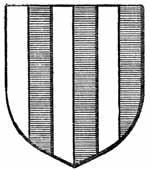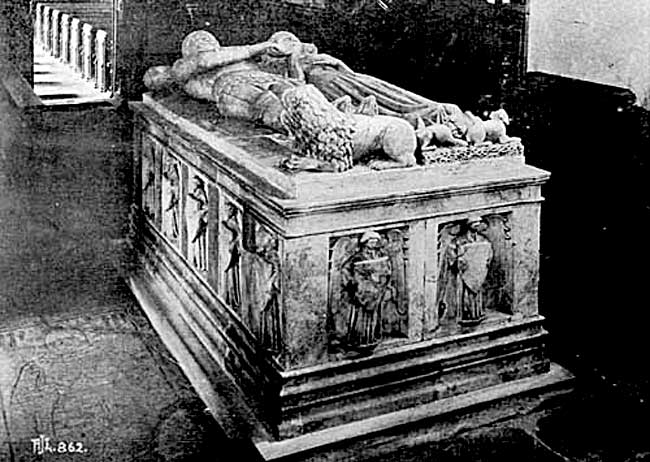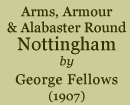< Stapleford | Contents | Strelley (contd.) >
All Saint's, Strelley.
 |
ARMS OF STRELLEY—Paly of six, argent and azure. |
AMONG much that is interesting in this Church are the tombs of the Strelley family grouped in the Chancel. In addition to the two fine alabaster altar tombs, the paving of the Chancel consists to a great extent of floor-stones and brasses connected with this old family, which is now extinct as regards the County of Nottingham, but which is represented by a branch living at Oakerthorpe, in Derbyshire. In the Journal of the Derbyshire Archaeological and Natural History Society for 1892 is set out their pedigree, showing an unbroken line of 800 years : it starts with one William de Strelley or Stradleigh, 1100-1135, and is continued down to the present generation. The members of this knightly family took a prominent part in the affairs of their shire and their kingdom, and there are some 60 references to them in Thoroton's Antiquities of Nottinghamshire. They seem to have been a rather fractious race, and twice the estates were at the mercy of the Crown for rebellion, for they were "in rebellion with Earl John" before he became King, and Robert de Strelley was taken (temp. Henry III.) at Kenilworth "as the King's enemy." The pedigree may also be found in the Notts. Visitations of 1569 and 1614 (Harleian Society, 1871). They allied themselves with many good families, such as Vavasour, Hercy, Pierrepont, Stanhope, Kemp, Willoughby, De la Warr, Sacheverell, etc. After the death of John Strelley (1501), who left a family of daughters, the lustre attaching to the Strelleys seemed to wane, and the remnant of their estate eventually passed into the possession of Ralph Edge, Esquire, three times Mayor of Nottingham, as well as holding the office of Town Clerk, in 1676, in the possession of whose descendants the property still continues.
 |
Tomb of Sir Sampson de Strelley |
On passing from the Nave under the fine carved oak rood screen, the large double table tomb assigned to (although there is some doubt if correctly so assigned, as there is no inscription upon it) Sir Sampson de Strelley and his wife, Elizabeth, daughter of Sir John Hercy, is to be seen occupying the middle of the Chancel. This Sir Sampson restored, in fact, nearly re-built, the Church, and "had licence that he and the rest of the Parishioners of that village might hear sermons for the space of a year in the Chappel scituate within his Manor of the said village, because the Parish Church was not then fully built" (1356). He died in 1390, but his costume and armour represents a period some years subsequent to the above date. The Knight, who clasps his wife's right hand in his, is represented in a pointed bascinet, with his head resting on his mantled and crested helm; over his armour is a plain jupon with a scalloped edge and a jewelled horizontal hip-belt, a sword and a misericorde dagger, his feet in articulated sollerets with rowelled spurs press against a lion: his armour is but little embellished. The head-dress of the lady is a highly-finished representation of the coiffure worn in mediaeval days; her hair is dressed in panniers at the sides of the head, and is confined in a pearl embroidered net, with a tiara round her forehead; her long kirtle, over a sideless cote-harde, is held together with a jewelled plate and clasp, and against her feet and neatly-folded skirt, crouch two dogs. Gracefully carved figures of angels, holding plain shields, occupy the panels round the base of the tomb, which measures 36 inches from the floor. It is possible this tomb may be that of Sir Sampson's son and successor, Sir Nicholas, who married Elizabeth Pierrepont; certainly the costume corresponds more closely with the latter's period than Sir Sampson's.
< Stapleford | Contents | Strelley (contd.) >
